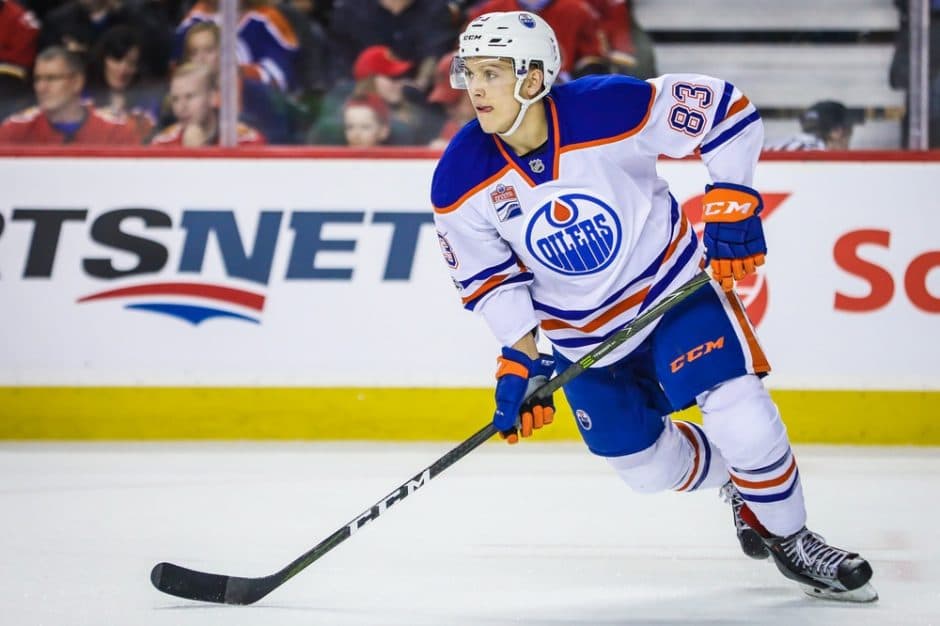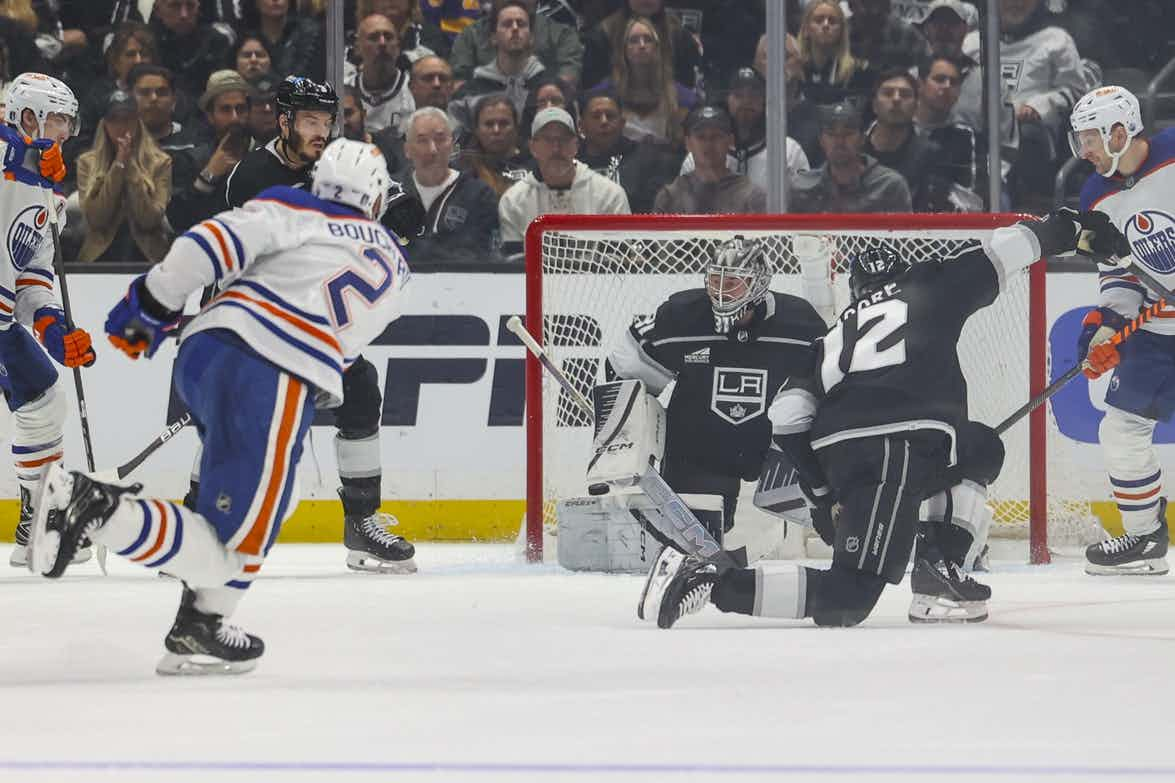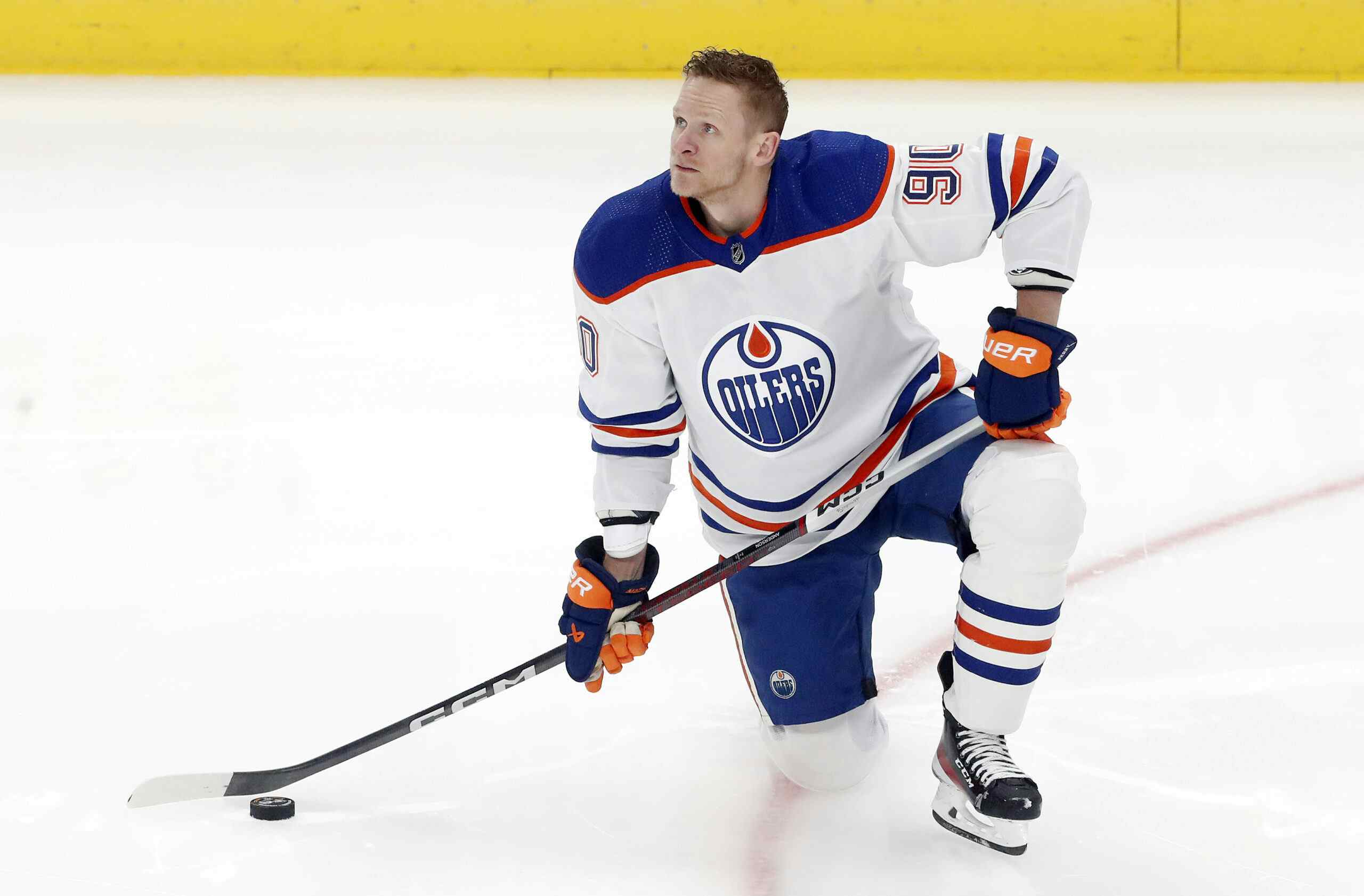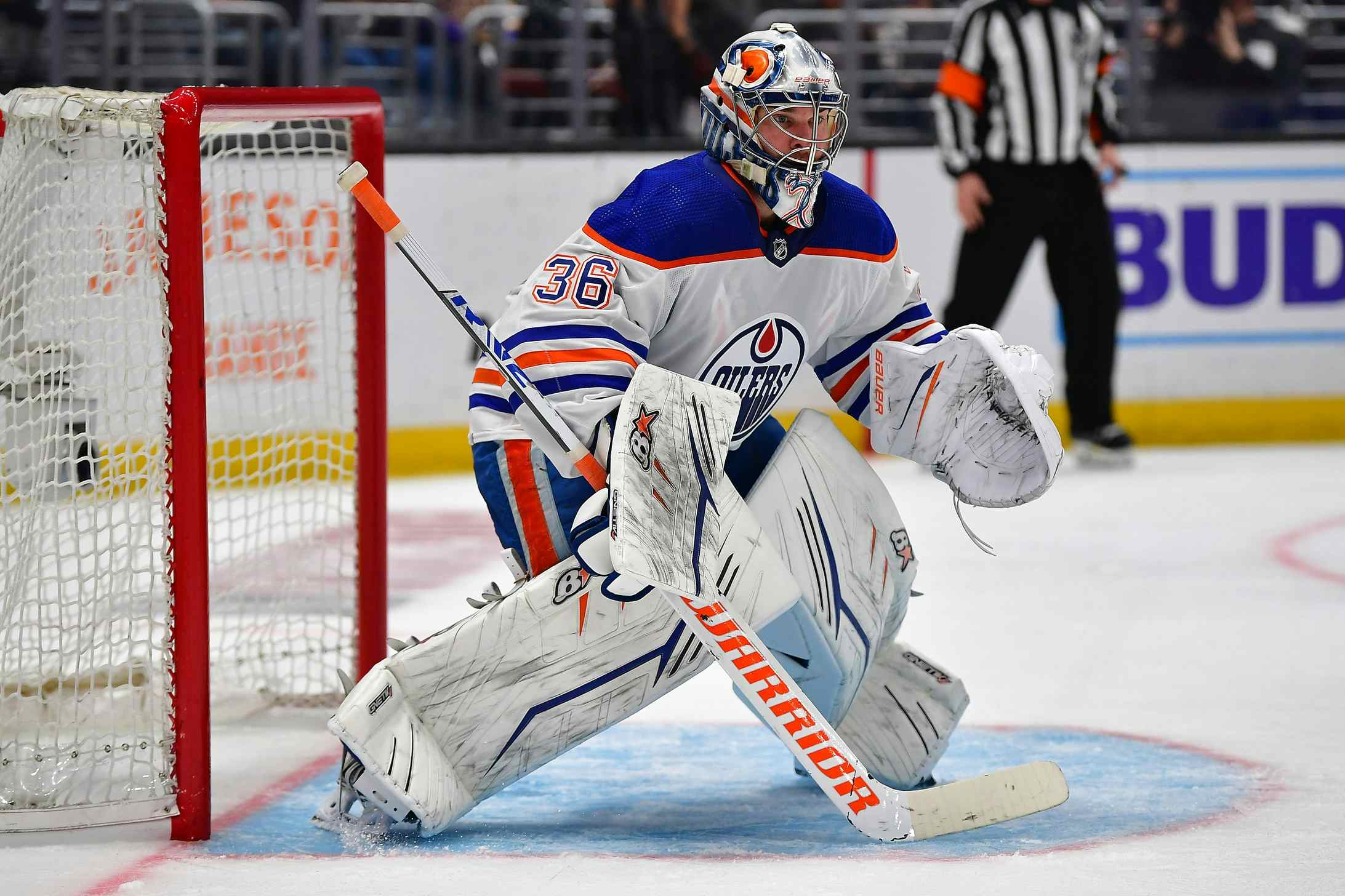Is Matt Benning ready to step into Edmonton’s defensive top four?

2016-17 Edmonton Oilers: No. 83 RD Matt Benning
Matt Benning surpassed expectations last season.
The former sixth-round pick of the Boston Bruins signed with the Oilers last August. It was a match which made sense on a lot of levels. Benning was from Edmonton originally, Oilers GM Peter Chiarelli was running the Bruins when Boston drafted him, and additionally the club had some opportunities open on the right side of its defensive depth chart.
Still, Benning could easily have impressed simply by spending most of the year in Bakersfield and playing well. Instead he came in and won a full-time NHL job almost immediately. Not only did he win the job, but he brought a multidimensional approach to each shift—he could move the puck, he could get into shooting lanes, and he had a surprising physical edge, especially for a guy listed at 6’1” and 195 pounds.
There was something for everyone to like in his play. Much has been made, in particular, of Benning’s performance against top-end opposition. According to the marvelous PuckIQ website, Benning spent 31 percent of his time against elite opposition (a significant amount for a primarily third-pairing player) and was in the green by both Corsi percentage and Dangerous Fenwick percentage (the latter adjusts for how dangerous any given shot is).
Because there was so much to like about Benning’s debut, those modest expectations of a year ago have completely disappeared, replaced with much higher aims for next season. What I wanted to do in this piece was look at how players with similar seasons at the same age had performed afterward, to give us an idea as to what kind of trajectory we can expect from Benning going forward.
I looked at all age 22 seasons by defencemen since the late 1990’s (when the NHL started recording ice time) using the wonderful Play Index tool on Hockey-Reference. Then I narrowed the list down using the following criteria:
- a minimum of 40 games played (Benning played 62)
- a points-per-game average between 0.18 and 0.30 (Benning recorded 0.24)
- an average per-game ice-time between 14.6 and 18.6 minutes (Benning recorded 16.6 minutes per game)
Hockey-Reference does the first two functions for me, but the third has to be done manually, meaning I get to see all the defencemen who meet the first two criteria but haven’t been filtered for ice-time yet. What comes across immediately is how amazing NHL coaches tend to be at spotting the guys with real talent at this age.
Lots of players at 22 haven’t yet discovered their offence—Duncan Keith, Andrej Sekera and Ryan Suter all pop up on the initial list—but all of those guys clear 20 minutes per game. Keith, as a rookie in 2005-06, was playing more than 23 minutes nightly, even though he wouldn’t top 40 points until his fourth season.
What’s left after we adjust for ice-time are a lot of capable NHL players, but precious few of the impact variety:
| Player | CF% | CF Rel | OZ S% | GP | PTS | TOI | ATOI | PTS/GP |
| Lukas Krajicek | — | — | — | 67 | 16 | 1240 | 18.5 | 0.24 |
| Christian Laflamme | — | — | — | 73 | 14 | 1351 | 18.5 | 0.19 |
| Petr Buzek | — | — | — | 63 | 19 | 1159 | 18.4 | 0.30 |
| David Tanabe | — | — | — | 68 | 13 | 1237 | 18.2 | 0.19 |
| Philip Larsen | 51.0 | -0.8 | 51.0 | 55 | 11 | 988 | 18.0 | 0.20 |
| Luca Sbisa | 48.4 | -0.4 | 52.7 | 80 | 24 | 1434 | 17.9 | 0.30 |
| Anton Babchuk | — | — | — | 52 | 14 | 906 | 17.4 | 0.27 |
| Michael Stone | 50.5 | -2.7 | 46.4 | 40 | 9 | 667 | 16.7 | 0.23 |
| Aki Berg | — | — | — | 70 | 16 | 1165 | 16.6 | 0.23 |
| Matt Benning | 52.3 | 2.0 | 56.7 | 62 | 15 | 1030 | 16.6 | 0.24 |
| Yannick Weber | 53.8 | 4.0 | 57.7 | 41 | 11 | 679 | 16.6 | 0.27 |
| Milan Jurcina | — | — | — | 51 | 11 | 840 | 16.5 | 0.22 |
| Mike van Ryn | — | — | — | 48 | 10 | 786 | 16.4 | 0.21 |
| Deron Quint | — | — | — | 60 | 13 | 972 | 16.2 | 0.22 |
| Keaton Ellerby | 51.4 | 1.4 | 51.7 | 54 | 12 | 869 | 16.1 | 0.22 |
| Luke Schenn | 46.9 | -4.0 | 50.7 | 79 | 22 | 1267 | 16.0 | 0.28 |
| Mathieu Dandenault | — | — | — | 75 | 14 | 1138 | 15.2 | 0.19 |
| Ladislav Smid | 43.1 | -7.2 | 49.9 | 60 | 11 | 897 | 15.0 | 0.18 |
| Chris Campoli | — | — | — | 51 | 14 | 756 | 14.8 | 0.27 |
There’s nothing wrong with being Aki Berg (over 600 career NHL games) or Michael Stone (343 and counting) but most of these guys had or are having careers as third-pairing defencemen, with occasional seasons inside an NHL top-four.
Of the players in the analytics era (2007-08 on), the one whose profile most closely resembles that of Benning is Yannick Weber. The minutes and point production are practically identical. Both were given a zone start push at 22, and both delivered with solid raw possession stats and relative numbers well above their team averages. Weber is now 28 and just under 350 games into an NHL career spent almost entirely in a third-pair role.
Yet it’s worth taking a moment to step back and look at the problems with this sorting method. It puts a lot of weight on ice-time, and not all ice-time is created equally. Edmonton was a pretty good team last year, with a lot of established options in the top-four; that drops Benning’s ice-time to a lesser amount than it would have been with an inferior team. Maybe Todd McLellan and his staff underrated the player; coaches are fallible and an ice-time filter puts a lot of weight on the judgment of one group of evaluators. I also can’t help noting that most of Benning’s ice-time comparables from the analytics era have shot metrics far worse than his, suggesting he may be underrated by this approach.
And yet, when one looks back over Benning’s season with the above list of comparable players in mind, some of the negatives stand out:
- Benning was scratched for Game 1 of the playoffs in favour of Eric Gryba, and throughout the season was challenged for ice-time by a player most would classify as a No. 6 or even No. 7 defenceman
- Benning’s totals with and without Andrej Sekera are stark. With Sekera, Benning had a 55% Corsi and 58% Dangerous Fenwick. Without Sekera, those totals are 51% and 50%. Given that he likely played weaker opposition away from Sekera, that’s concerning. Additionally, while Sekera also appeared to benefit from playing with Benning, away from Benning he a) almost certainly had a tougher zone start and b) played with Kris Russell, whose style of play produces lousy shot metrics.
- There was no real in-season ramp-up in minutes for Benning. His late-season slump may well have been injury-related or even just a result of being used to a college schedule, but whatever the reason it’s hard to make the case he progressed dramatically throughout the year.
Having said all that, I personally like Benning a lot as a player, both by eye and by number. This very specific point of view doesn’t erase those other assessments, and has very real limitations that leave me less than totally sold on its results.
But it does give me pause, and remind me how many other young NHL’ers I’ve seen who delivered brilliantly as rookies but struggled to build on those performances, a list which most recently includes Brandon Davidson. Fortunately for the Oilers, there’s no need to make any decisions immediately. Benning’s contract has another year to run and they can wait and see what he does for an encore.
Bottom line: Benning blew past modest expectations and established himself as a full-time NHL’er in his rookie pro campaign. There’s no need to over-correct in 2017-18, setting the bar higher than he can reasonably be expected to attain. Winning an NHL job is a hard thing to do, but becoming a mainstay in the top four is even harder and we don’t know yet if Benning can make that second jump.
Previous year-end reviews:
- Centre: Leon Draisaitl, Mark Letestu, Drake Caggiula, David Desharnais, Anton Lander
- Left Wing: Milan Lucic, Patrick Maroon, Benoit Pouliot, Matt Hendricks, Jujhar Khaira
- Right Wing: Jordan Eberle, Zack Kassian, Tyler Pitlick, Iiro Pakarinen
- Left Defence: Oscar Klefbom, Andrej Sekera, Darnell Nurse, Jordan Oesterle, Dillon Simpson, Griffin Reinhart
- Right Defence: Adam Larsson, Kris Russell, Eric Gryba, Mark Fayne
- Goal: Cam Talbot, Laurent Brossoit, Jonas Gustavsson
Recent articles from Jonathan Willis





